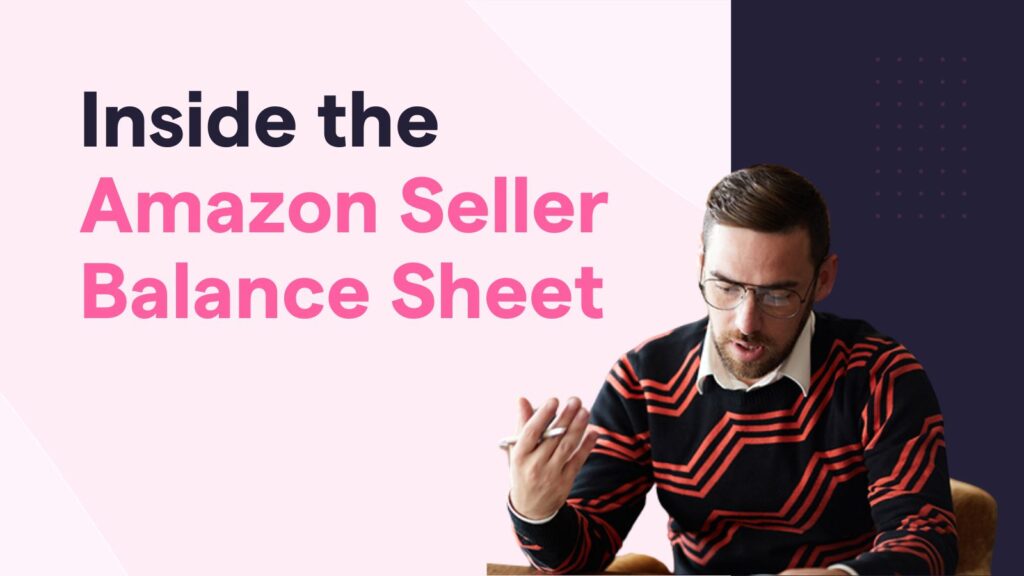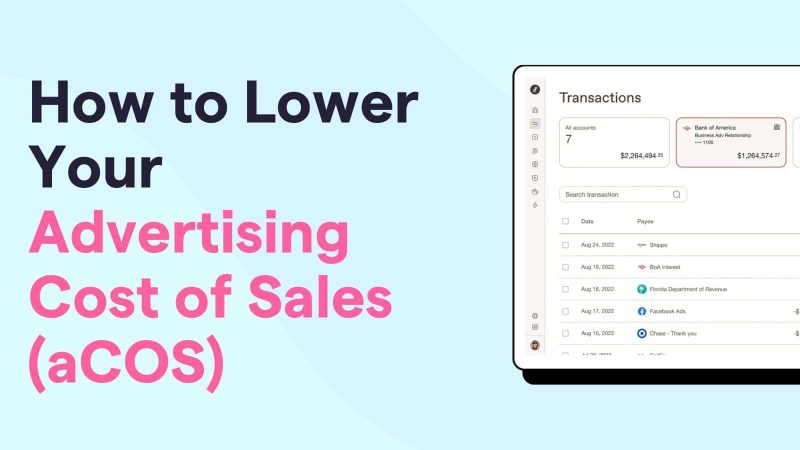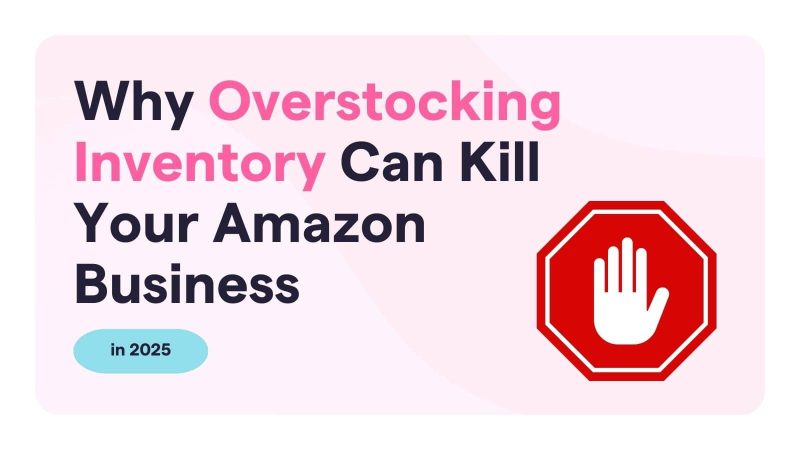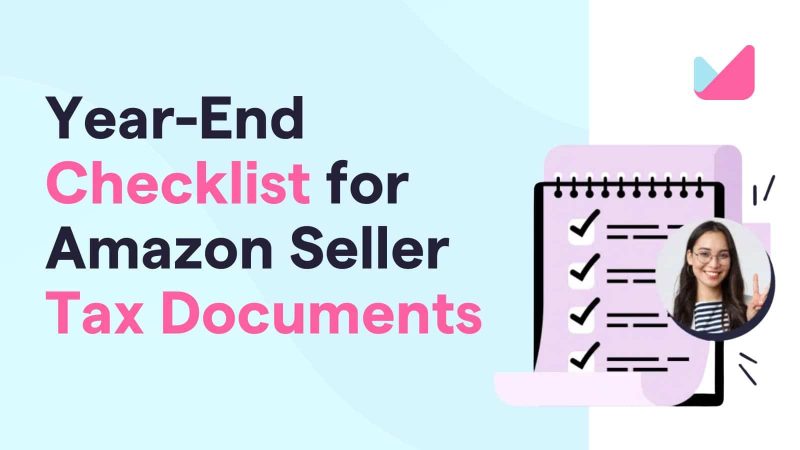Running an Amazon store might seem like just listing products and watching sales roll in, but the reality is a bit more complex.
To truly understand your store’s financial health, you need more than a good sales report—you need to know what your balance sheet is telling you.
This snapshot of your business lets you see how much cash you have, what you owe, and the value of your assets (like inventory).
While the Amazon seller balance sheet may seem like a mystery to some, it’s actually one of the best tools for making smart business decisions. Whether you’re wondering if you can afford that next bulk order or how much profit you’ve made over time, your balance sheet holds the key.
Let’s break down what each section means for your Amazon business and show you how we recommend our clients read it to…
Balance Sheet vs. P&L: What’s the Difference?
First things first, let’s address how a balance sheet is different from the Amazon P&L.
A balance sheet is like a snapshot in time. It tells you where your business stands financially at a specific moment—what you own (assets), what you owe (liabilities), and what’s left over (equity). It’s great for seeing the overall health of your business.
On the other hand, the Profit and Loss (P&L) statement shows your performance over a period of time. It answers questions like, “Did I make money last month?” or “How much did I spend on advertising?”
While the P&L tracks revenue and expenses, the balance sheet is all about what’s left at the end of the day.
Both are essential, but they serve different purposes. The P&L gives you insights into your profitability, while the balance sheet shows your business’s financial foundation.
Together, they’re both equally important to help you make informed financial decisions about your Amazon store.
Now, let’s dive into the specific parts of an Amazon seller balance sheet.
The Balance Sheet Formula: Assets = Liabilities + Equity
At the heart of every balance sheet is a simple formula: Assets = Liabilities + Equity.
It might sound technical, but it’s really just showing you how your business’s resources (assets) are funded—either by borrowing money (liabilities) or through your own investment (equity).
-
- Assets are everything your business owns, like cash, inventory, and equipment.
-
- Liabilities are what your business owes to others, like suppliers or credit card companies.
-
- Equity is what’s left over after paying off all your debts—it’s your share of the business.
Let’s dive into each one.
Assets: What You Own
Assets are the building blocks of your Amazon business. They represent what you own and can use to generate revenue—whether that’s cash, inventory, or other valuable items that help keep your business running. By understanding what assets are, you’ll get a clearer picture of your financial foundation.
Cash
Your cash is one of the most straightforward assets. As an Amazon seller, cash can come in a few different forms:
-
- Cash on hand: If you have physical warehouse operations, this is the actual cash you may have at any given time.
-
- Cash in bank: This is the money sitting in your business bank accounts, ready for use.
-
- Cash in Amazon Seller Wallet: Funds Amazon has paid out but haven’t been transferred to your bank yet.
Having a healthy cash balance is important for managing day-to-day operations, but you also want to make sure you’re using it wisely to invest back into your business.
Receivables
Your receivables represent the sales you’ve made that Amazon hasn’t paid you for yet. Typically, Amazon transfers funds every two weeks, but these amounts can be delayed—particularly with Amazon’s Reserve Balance (funds they withhold in case of returns or chargebacks). Keep an eye on your receivables to know how much money is coming your way.
Inventory
Inventory is a big part of your balance sheet, but it can also be a double-edged sword. On one hand, it represents future sales. On the other hand, it’s cash you can’t touch while it’s sitting on shelves. Overstocking on inventory means you’re tying up valuable funds that could be used for other parts of your business.
Plus, Amazon charges storage fees, so you’re paying extra for every product that sits in their warehouse too long.
The key is balancing enough inventory to meet demand without going overboard. Your balance sheet will show the value of your inventory at any given moment—if that number is high and products aren’t moving, it’s a signal to adjust your strategy.
Prepaid Expenses
Prepaid expenses are payments you’ve made for things you’ll use later, like software subscriptions or office supplies. For Amazon sellers, prepaid expenses might not have a huge impact, but it’s still good to know how these payments factor into your balance sheet.
Fixed Assets
If you own equipment, vehicles, or a warehouse, these are considered fixed assets. While they’re essential for your operations, they lose value over time through depreciation. On your balance sheet, you’ll see these assets listed alongside their accumulated depreciation, showing the current book value of each.
For example:
| Fixed Asset | $25,000 |
| Accumulated Depreciation | ($5,000) |
| Book Value | $20,000 |
This gives you a more realistic view of what your assets are actually worth.
Liabilities: What You Owe
Liabilities are the debts or obligations you have to pay—whether to suppliers, lenders, or even Amazon itself. Having liabilities is not a bad thing; it’s part of running a business. But you want to keep them under control so they don’t snowball into bigger problems.
Accounts Payable
Accounts payable are amounts you owe to suppliers. For example, if you’ve ordered inventory on credit and need to pay your supplier within 30 days, that’s considered accounts payable. It’s important to monitor this number closely to avoid falling behind on payments.
Credit Card Payable
Credit cards are great tools for your Amazon business, especially for financing short-term expenses like inventory or advertising. But it’s easy to let balances build up. Your credit card payable represents the amounts you owe on your cards. Stay on top of it to avoid high interest and unmanageable debt.
Refunds
When a customer returns a product, you’re responsible for issuing a refund. Refunds should be carefully tracked, as they affect both your cash flow and the overall performance of your business. Too many refunds could signal a quality or product listing issue.
Tax Liability
Don’t forget about taxes! Tax liabilities are amounts you owe to the government—whether for sales tax, income tax, or other obligations. As your business grows, it’s important to set aside enough cash to cover these expenses.
We recommend setting aside 40% of your profit every month in a tax savings account. That sounds like a lot of money, and it is. But it’s a safe amount to make sure that you have enough to cover what you owe in April, and anything leftover will feel like “bonus money”.
Equity
Lastly, equity is your share of the business after paying off all your liabilities.
In other words, it’s the value of your Amazon business. If your assets are greater than your liabilities, your equity is positive—and that’s where you want to be!
Owner’s Capital
When you start your Amazon business, you put in some of your own money. That’s your owner’s capital. As your business earns profits, those profits get added to this account, increasing your ownership stake over time.
Drawings
Occasionally, you may withdraw your money for personal reasons. After all, it’s your hard-earned money, right? The withdrawals are recorded in the drawings account, which reduces your capital. Try to keep withdrawals small, so you don’t accidentally strain your business’s cash flow.
Confused About Your Amazon Seller Balance Sheet? We’re Here to Help!
The balance sheet can be tricky, especially with all the accounting jargon that comes with it. But it doesn’t have to be that way, right?
At MuseMinded, we work with Amazon sellers just like you—no jargon, just practical financial advice. Your business should be easy to understand, not a puzzle to solve.
If you’re wondering how your Amazon business is really performing, or how we can improve your margins and keep more money in your pocket, we’re here to help.
Book a call with us using the calendar below, and let our team handle your Amazon accounting so you can focus on growing your sales and scaling your brand.
Until next time!




